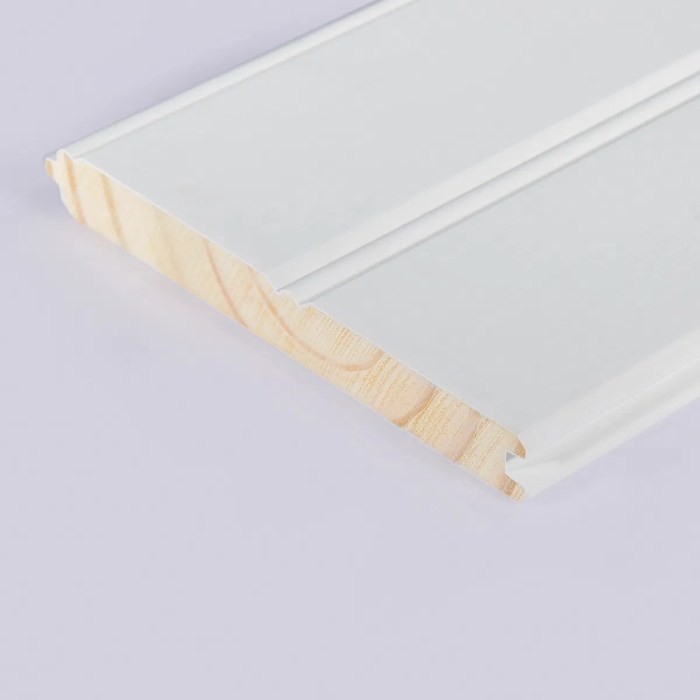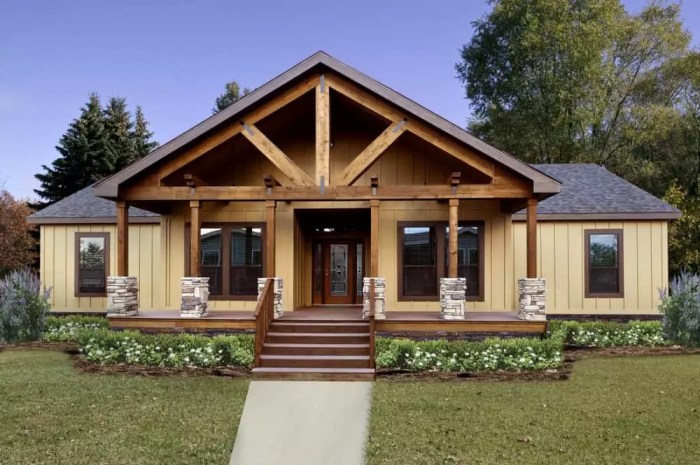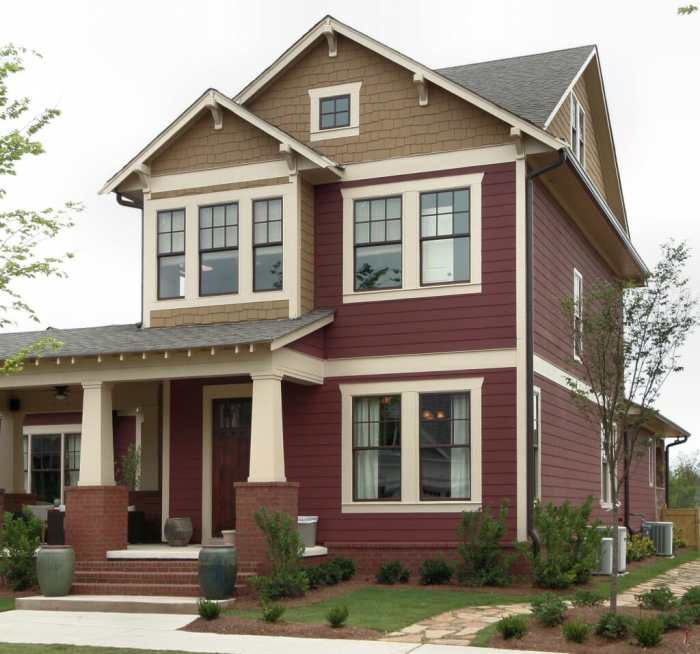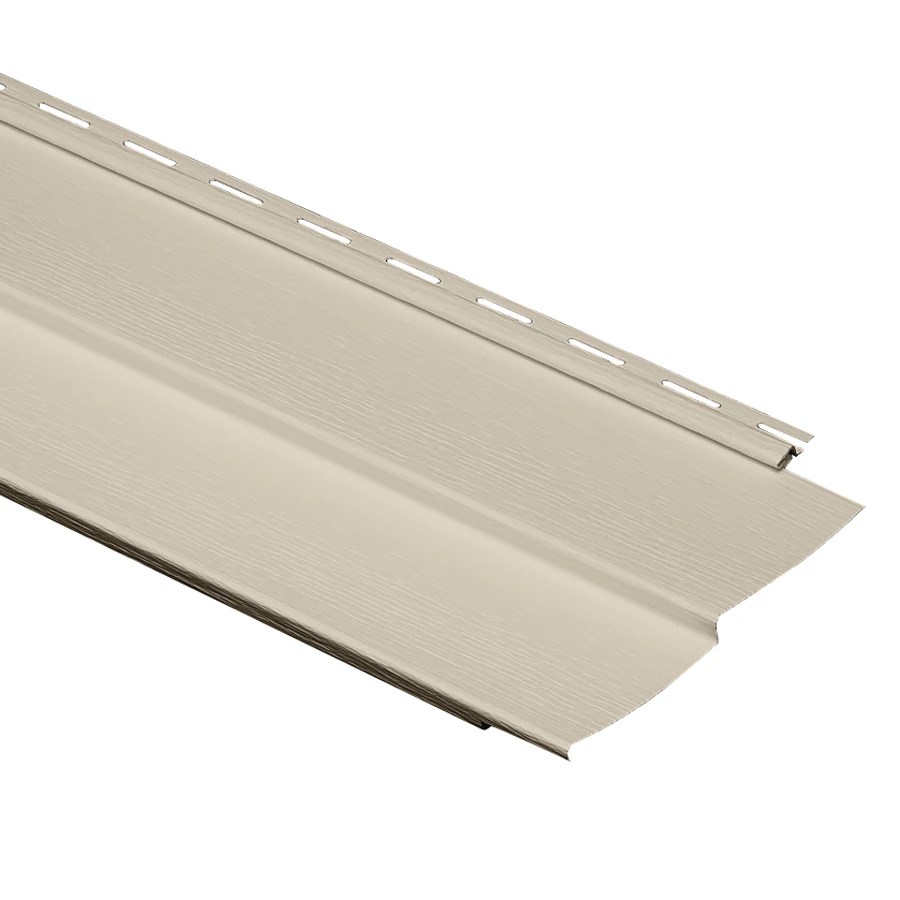Thinking about upgrading your home’s exterior? James Hardie fiber cement siding is a popular choice, known for its durability and aesthetic appeal. But is it the right investment for you? This comprehensive guide dives deep into everything you need to know about James Hardie siding, from its manufacturing process and diverse styles to installation, maintenance, cost considerations, and long-term value. We’ll cut through the marketing hype and give you the straight facts to help you make an informed decision.
We’ll explore the advantages and disadvantages, comparing it to other siding materials like vinyl and wood. We’ll also cover the warranty, customer support, and even provide design tips to help you seamlessly integrate James Hardie siding into your home’s overall aesthetic. By the end, you’ll have a clear understanding of whether James Hardie fiber cement siding is the perfect solution for your next home improvement project.
Product Overview
James Hardie fiber cement siding represents a significant advancement in exterior home cladding. Its durability, aesthetic versatility, and longevity make it a popular choice for homeowners seeking a low-maintenance, high-impact upgrade. Understanding its manufacturing process, available styles, and comparative advantages is crucial for making an informed decision.
James Hardie Fiber Cement Siding Manufacturing
The manufacturing process begins with a blend of cellulose fibers, cement, and other proprietary additives. This mixture is then formed into the desired shapes and profiles under high pressure. Subsequently, the formed panels undergo a curing process, which involves carefully controlled temperature and humidity levels to ensure optimal strength and durability. Finally, the siding is finished with a high-quality paint or primer, providing lasting color and protection against the elements. This rigorous process results in a product far exceeding the performance of traditional wood siding.
James Hardie Siding Styles and Colors
James Hardie offers a wide array of siding styles to complement diverse architectural designs. From the classic lap siding that mimics traditional wood to more contemporary options like vertical panels and shingles, homeowners have a vast selection to choose from. Each style is available in a broad spectrum of colors, ranging from subtle neutrals to bold, vibrant hues. This extensive palette allows for unparalleled customization, ensuring a perfect match for any home’s aesthetic. For instance, their Artisan® Collection offers deeply textured profiles that capture the rich look of hand-hewn wood, while the HardiePlank® Lap Siding provides a classic, clean look. The color options are similarly diverse, reflecting current design trends and providing homeowners with the flexibility to express their individual style.
James Hardie Siding Lifespan and Durability Compared to Other Materials
James Hardie fiber cement siding boasts a significantly longer lifespan than many other siding materials. Unlike wood, which is susceptible to rot, insect infestation, and warping, James Hardie siding is resistant to these issues. Compared to vinyl siding, which can crack, fade, and dent relatively easily, James Hardie’s superior durability is evident. Its resistance to fire, moisture, and pests translates to lower maintenance costs and a longer-lasting investment. While the initial cost may be higher than vinyl, the extended lifespan and reduced maintenance significantly offset this difference over the long term. Many James Hardie products come with a 30-year warranty, underscoring the manufacturer’s confidence in the product’s durability.
James Hardie Siding Price Points
The price of James Hardie siding varies depending on the chosen style, color, and the complexity of installation. However, it generally falls within a higher price range compared to vinyl or aluminum siding. The premium price reflects the superior quality, durability, and longevity of the product.
| Product Line | Approximate Price Range per Square Foot (USD) | Style Examples | Notes |
|---|---|---|---|
| HardiePlank® | $3.00 – $6.00 | Lap Siding, Vertical Siding | Most popular and widely available |
| HardieShingle® | $4.00 – $7.00 | Shingles, Shakes | Offers a more textured, rustic look |
| Artisan® Collection | $5.00 – $8.00 | Various textured profiles | Premium line with enhanced textures and detailing |
| CedarShake® | $6.00 – $9.00 | Cedar-look shingles | Premium shingle with a realistic cedar appearance |
Installation and Maintenance
James Hardie fiber cement siding offers exceptional durability and curb appeal, but realizing its full potential hinges on proper installation and consistent maintenance. Neglecting either can lead to premature deterioration and costly repairs, significantly impacting your investment’s longevity. This section provides a comprehensive guide to ensure your James Hardie siding remains a beautiful and protective asset for years to come.
James Hardie Fiber Cement Siding Installation
Successful installation of James Hardie fiber cement siding requires precision and adherence to manufacturer guidelines. Improper installation can compromise the siding’s weather resistance and structural integrity. A professional installation is always recommended, but for DIY enthusiasts, careful planning and attention to detail are paramount.
- Preparation: Begin by thoroughly inspecting the existing wall surface for any damage, ensuring it’s clean, dry, and structurally sound. Address any issues like rot or unevenness before proceeding. This foundational step prevents future problems.
- Sheathing and Flashing: Install appropriate sheathing, ensuring it’s properly fastened and level. Apply flashing around windows, doors, and other penetrations to prevent water intrusion. This is crucial for long-term protection.
- Installation of Starter Strips: Install starter strips at the bottom of the wall, providing a level and consistent base for the siding panels. Precise alignment here is key to a neat finish.
- Panel Installation: Begin installing the siding panels, ensuring proper overlap and alignment. Use appropriate fasteners and spacing, following manufacturer recommendations. Consistent spacing prevents buckling and warping.
- Finishing: Once all panels are installed, install trim and finishing pieces. Caulk all joints and seams to create a watertight seal. Proper caulking is essential for preventing water damage.
Maintaining James Hardie Siding
Regular cleaning and maintenance extend the lifespan of your James Hardie siding, preserving its aesthetic appeal and structural integrity. A simple maintenance routine can prevent costly repairs down the line.
- Regular Cleaning: Clean your siding at least twice a year, using a garden hose with a soft-bristled brush to remove dirt, debris, and loose algae. For stubborn stains, consider using a pressure washer, but maintain a safe distance to avoid damage. A gentle approach is best.
- Caulk Inspection: Regularly inspect caulking around windows, doors, and other penetrations for cracks or gaps. Reapply caulking as needed to maintain a watertight seal. Proactive caulking prevents water infiltration.
- Paint Inspection (if applicable): If your siding is painted, inspect the paint regularly for chipping or peeling. Repaint as needed to maintain the siding’s protective coating. Regular painting protects the fiber cement.
- Pest Control: Regularly inspect for signs of pest infestation, such as wood-boring insects. Address any infestations promptly to prevent structural damage. Early detection is crucial.
Common Installation Problems and Solutions
Despite careful planning, installation challenges can arise. Recognizing and addressing these promptly is crucial for a successful project.
| Problem | Solution |
|---|---|
| Uneven siding panels | Check for improper sheathing or inaccurate measurements. Ensure proper fastening and alignment of panels. |
| Cracked or broken panels | Handle panels carefully during installation. Replace damaged panels immediately. |
| Water intrusion | Check for gaps in caulking or flashing. Ensure proper overlap of siding panels. |
| Nail pops | Use appropriate fasteners and ensure proper penetration depth. Address nail pops promptly to prevent further damage. |
James Hardie Siding Inspection and Maintenance Checklist
This checklist provides a framework for regular inspections and maintenance, helping to ensure your siding remains in top condition.
- Visual Inspection: Check for cracks, chips, or other damage to the siding panels.
- Caulk Inspection: Examine all caulking for cracks or gaps.
- Flashing Inspection: Check flashing around windows, doors, and other penetrations for damage.
- Cleaning: Clean the siding using a garden hose and soft-bristled brush.
- Pest Inspection: Check for signs of pest infestation.
- Paint Inspection (if applicable): Inspect paint for chipping or peeling.
- Repair/Replacement: Address any identified damage promptly.
Advantages and Disadvantages
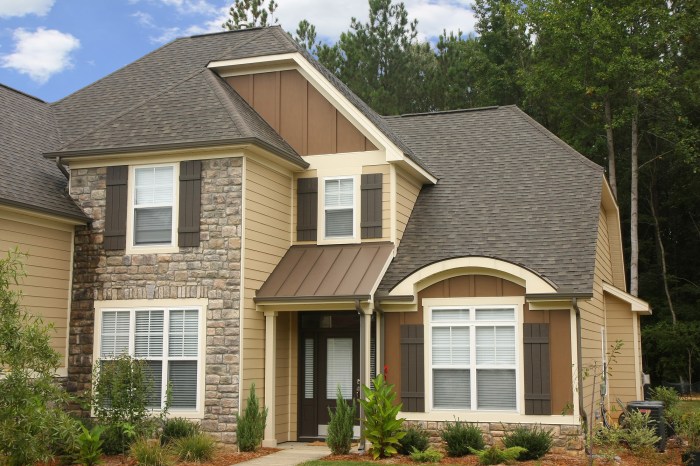
Choosing the right siding for your home is a crucial decision impacting aesthetics, durability, and long-term value. James Hardie fiber cement siding presents a compelling option, but like any material, it boasts both strengths and weaknesses. Understanding these aspects is key to making an informed choice that aligns with your specific needs and budget.
Benefits of James Hardie Fiber Cement Siding
James Hardie fiber cement siding offers a compelling combination of durability, aesthetic versatility, and low maintenance. Its superior performance compared to other materials translates to significant long-term cost savings and peace of mind.
- Exceptional Durability: James Hardie siding resists damage from harsh weather conditions, including extreme temperatures, heavy rain, and strong winds. Its resistance to rot, insects, and fire significantly extends its lifespan compared to wood siding, reducing the need for frequent repairs or replacements.
- Aesthetic Versatility: Available in a wide range of colors, textures, and styles, James Hardie siding can seamlessly integrate with various architectural designs. From traditional clapboard to modern sleek profiles, it offers unparalleled design flexibility to enhance curb appeal.
- Low Maintenance: Unlike wood siding that requires regular painting and staining, James Hardie siding demands minimal upkeep. A simple occasional cleaning usually suffices to maintain its pristine appearance for years.
- High Resale Value: The superior durability and longevity of James Hardie siding contribute to a higher resale value for homes. Potential buyers often view it as a desirable feature, adding to the overall appeal of the property.
Drawbacks of James Hardie Fiber Cement Siding
While James Hardie siding offers many advantages, potential drawbacks should be considered for a balanced perspective. Understanding these limitations helps manage expectations and ensures the material aligns with your project requirements.
- Higher Initial Cost: James Hardie siding typically has a higher upfront cost compared to vinyl or wood siding. However, this initial investment is often offset by its extended lifespan and reduced maintenance needs.
- Installation Complexity: Professional installation is generally recommended due to the material’s weight and specific handling requirements. Improper installation can compromise its performance and warranty.
- Potential for Cracking: While highly durable, James Hardie siding can be susceptible to cracking under extreme stress or improper installation. This risk is mitigated through proper installation techniques and choosing appropriate products for the specific climate.
- Susceptibility to Moisture Damage (if not properly installed): While resistant to rot, improper installation can leave James Hardie siding vulnerable to moisture damage, potentially leading to issues like discoloration or warping.
Environmental Impact Comparison
The environmental impact of building materials is a growing concern. James Hardie siding, while not entirely eco-friendly, presents a relatively favorable profile compared to some alternatives.
Compared to vinyl siding, which is derived from petroleum and contributes to landfill waste, James Hardie fiber cement siding uses a combination of cement, cellulose fibers, and other materials, resulting in a product with a lower carbon footprint over its lifespan. Furthermore, James Hardie actively engages in sustainable manufacturing practices, aiming to minimize its environmental impact.
While wood siding is a natural material, its production can contribute to deforestation. Furthermore, the need for frequent maintenance and eventual replacement contributes to a larger environmental footprint over time. James Hardie’s longevity minimizes this issue.
Case Studies Demonstrating Long-Term Performance
Numerous case studies and independent tests highlight the long-term durability and performance of James Hardie siding. For example, many homes clad in James Hardie siding decades ago still exhibit minimal signs of wear and tear, showcasing its exceptional longevity and resistance to the elements. These real-world examples demonstrate its value proposition and justify its higher initial investment. Independent testing agencies frequently rate James Hardie siding among the highest-performing siding options available, confirming its resilience against various environmental stressors. Data from insurance companies also shows a lower frequency of claims related to damage for homes sided with James Hardie products compared to other materials, supporting the material’s superior performance.
Warranty and Customer Support
Choosing the right siding for your home is a significant investment, and understanding the warranty and support offered by the manufacturer is crucial. James Hardie, a leading provider of fiber cement siding, offers a comprehensive warranty program designed to protect your investment and provide peace of mind. Let’s delve into the specifics of their warranty and the customer support resources available.
James Hardie’s warranty coverage varies depending on the specific product and its intended use. Generally, their warranties cover manufacturing defects in materials and workmanship for a specified period. This typically includes protection against cracking, splitting, rotting, and other issues stemming from defects in the manufacturing process. However, it’s important to note that warranties often exclude damage caused by improper installation, normal wear and tear, or acts of God (like extreme weather events). Detailed warranty information, including specific terms and conditions, is available on the James Hardie website and should be reviewed carefully before installation.
Filing a Warranty Claim
The process for filing a warranty claim with James Hardie typically involves contacting their customer support team either via phone or online. You will need to provide documentation such as proof of purchase, installation date, and photographic evidence of the damage. James Hardie will then review your claim and, if approved, will either repair or replace the defective siding. The specific steps involved in the claim process are clearly Artikeld in the warranty document and on their website. It’s advisable to keep thorough records of all communication and documentation related to your claim.
James Hardie Customer Support Resources
James Hardie offers multiple avenues for customer support, aiming to provide accessible assistance to homeowners. These resources typically include a dedicated customer service phone line, a comprehensive website with FAQs and troubleshooting guides, and potentially online chat support. Their website also often provides access to warranty information, installation instructions, and other helpful resources. The availability and accessibility of these resources vary by region, so checking the James Hardie website specific to your location is crucial.
Comparison of James Hardie’s Warranty with Competitors
Direct comparison of warranties across different siding manufacturers requires careful analysis of specific terms and conditions. However, generally speaking, James Hardie’s warranty is considered competitive within the industry, often offering longer coverage periods than some competitors for certain types of defects. Other manufacturers, such as CertainTeed and LP SmartSide, also offer robust warranties, but the specifics, such as length of coverage and exclusions, can differ significantly. A thorough comparison of warranties from multiple manufacturers is essential before making a siding purchase decision. Factors to consider include the length of the warranty, the types of defects covered, and the process for filing a claim. It’s recommended to review the warranty documents of several competing brands to determine which offers the best protection for your investment.
Design and Aesthetics
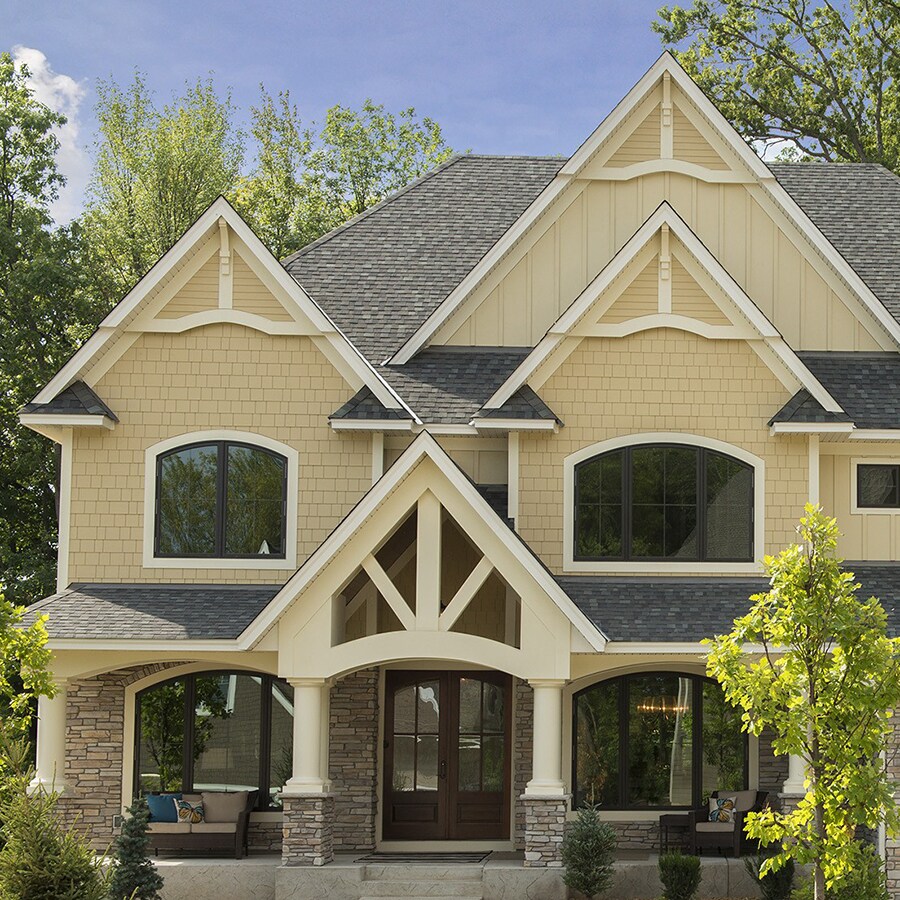
James Hardie fiber cement siding offers a compelling blend of durability and aesthetic versatility, significantly enhancing a home’s curb appeal and market value. Its ability to mimic the look of wood, stucco, or brick, without the associated maintenance headaches, makes it a popular choice for homeowners seeking a low-maintenance, high-impact exterior. The wide range of colors, textures, and styles available allows for seamless integration with various architectural designs and personal preferences.
The inherent design flexibility of James Hardie siding allows homeowners to create stunning exteriors that reflect their unique style. Whether you’re aiming for a classic, modern, rustic, or contemporary look, the material’s adaptability ensures a visually appealing outcome. The potential for customization extends beyond color selection; the variety of panel profiles and installation techniques offers a level of design control unmatched by many other siding options. This allows for the creation of striking visual details and textures that add depth and character to any home’s facade.
James Hardie Siding’s Suitability Across Architectural Styles
James Hardie siding is remarkably adaptable and complements a broad spectrum of architectural styles. Its versatility allows it to seamlessly integrate into both traditional and contemporary designs, enhancing the overall aesthetic appeal without appearing out of place. For instance, the deep, rich tones and textured surfaces available in James Hardie products perfectly complement the classic elegance of Victorian homes, while the clean lines and modern color palettes suit contemporary minimalist designs. The range of options allows for stylistic cohesion, regardless of the architectural style.
Visual Representations of James Hardie Siding on Various Home Styles
Imagine a charming Cape Cod-style home, painted in a soft, muted gray James Hardie siding with subtle wood grain texture. The clapboard profile evokes a traditional feel, while the color palette provides a contemporary touch. The siding’s durability ensures the home maintains its aesthetic appeal for years to come, resisting the effects of harsh weather.
Now, picture a sleek, modern farmhouse. The clean lines of the architecture are beautifully complemented by James Hardie fiber cement siding in a crisp, bright white. The smooth, flat panel profile creates a minimalist aesthetic, while the color choice maximizes natural light reflection, brightening the home’s exterior. The low-maintenance nature of the siding allows the homeowners to focus on enjoying their home rather than constant upkeep.
Consider a stately colonial home adorned with James Hardie siding that mimics the look of natural cedar shingles. The rich, warm tones and textured surface create a sense of timeless elegance, reflecting the home’s architectural heritage. This option offers the beauty of natural wood without the associated maintenance challenges, providing long-lasting beauty and protection.
Design Tips for Integrating James Hardie Siding
Careful consideration of color palettes is crucial. Choose colors that complement the surrounding landscape and architectural details. Consider using a contrasting trim color to highlight windows and doors, creating visual interest and emphasizing architectural features.
The selection of panel profiles is equally important. Clapboard siding creates a classic look, while vertical siding offers a more modern feel. Consider the overall scale of the home when selecting panel sizes and profiles. Larger panels can make a home appear more expansive, while smaller panels can add detail and texture.
Proper installation is key to achieving a professional and aesthetically pleasing result. Ensure that the siding is installed correctly to avoid gaps and inconsistencies. Pay close attention to details like corner treatments and window and door surrounds. A well-installed James Hardie siding system will not only enhance the home’s curb appeal but also protect it from the elements for years to come.
Cost Considerations
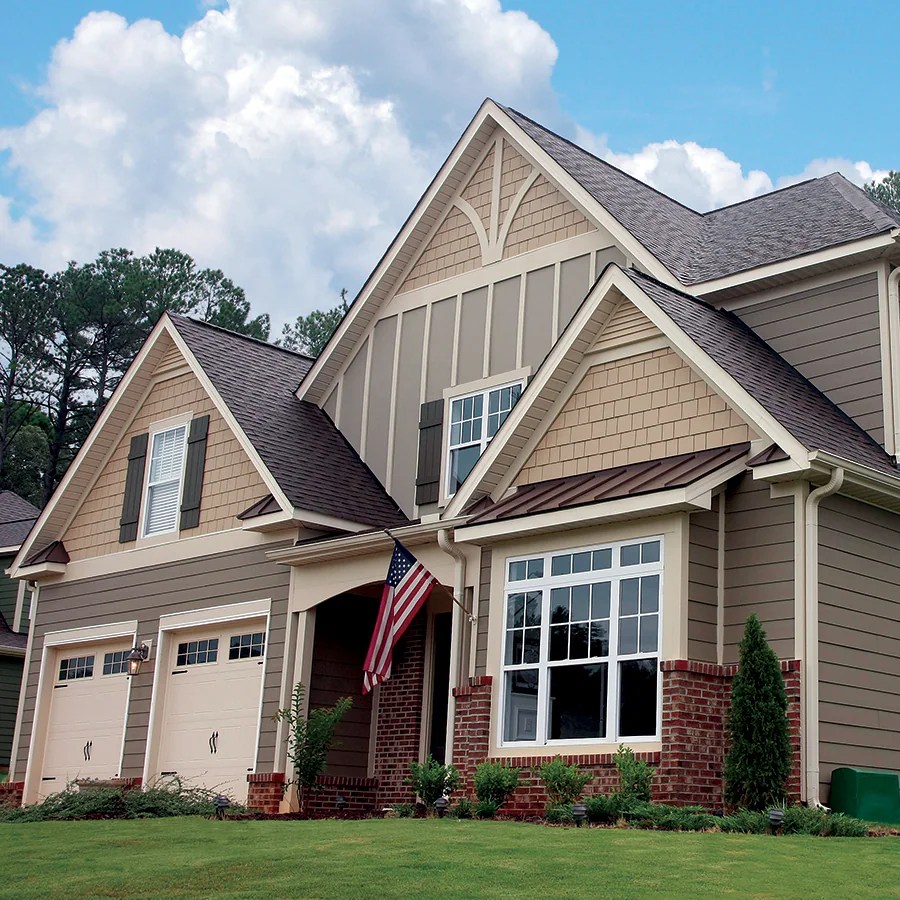
Choosing James Hardie fiber cement siding is a significant investment, but understanding the cost factors can help you budget effectively and make an informed decision. The overall price isn’t just about the materials; it’s a complex interplay of several variables that can significantly impact your final bill. Let’s break down the key components and explore how James Hardie compares to other siding options in the long run.
Factors Influencing the Overall Cost
Several key factors determine the total cost of a James Hardie fiber cement siding installation. These include the size of your home, the complexity of the project (e.g., intricate trim work), the chosen style and color of siding, regional labor costs, and the contractor’s experience and overhead. A larger home naturally requires more materials and labor, driving up the cost. Intricate designs, such as extensive trim or multiple colors, add to both material and labor expenses. Geographic location significantly influences labor rates; contractors in high-cost areas will charge more. Finally, the contractor’s reputation and expertise affect pricing; experienced professionals often command higher fees.
Cost Breakdown: Materials, Labor, and Other Expenses
The cost of James Hardie siding installation is typically broken down into three main categories: materials, labor, and other expenses. Materials include the siding panels themselves, trim pieces, fasteners, and underlayment. Labor encompasses the cost of professional installation, which includes preparation, installation, and cleanup. Other expenses can include permits, disposal fees for old siding, and potential repairs to underlying sheathing. It’s crucial to obtain detailed, itemized quotes from multiple contractors to compare apples to apples. For example, a 2,000 square foot home might see material costs ranging from $8,000 to $16,000, labor costs from $6,000 to $12,000, and other expenses adding another $1,000 to $3,000. These are estimates and can vary greatly.
Long-Term Cost-Effectiveness Compared to Other Options
While the upfront cost of James Hardie siding may be higher than vinyl or aluminum, its superior durability and longevity translate to significant long-term savings. Vinyl siding, for instance, is prone to fading, cracking, and damage from impact, requiring more frequent repairs or replacements. Aluminum siding, while durable, can dent easily. James Hardie’s resistance to rot, insects, fire, and extreme weather conditions minimizes the need for costly repairs and replacements over its lifespan, making it a more cost-effective option in the long run. Consider the total cost of ownership—including initial cost, maintenance, and lifespan—for a truly accurate comparison.
Sample Budget for a Home Siding Project
Let’s consider a hypothetical 1,500 square foot home siding project using James Hardie products. This budget is an estimate and can vary significantly based on location and specific project needs.
- Materials: $6,000 – $12,000 (This includes siding panels, trim, fasteners, and underlayment)
- Labor: $4,500 – $9,000 (This accounts for professional installation, preparation, and cleanup)
- Permits and Fees: $500 – $1,500 (This covers necessary permits and disposal fees for old siding)
- Contingency: $1,000 – $2,000 (A buffer for unexpected expenses or changes)
- Total Estimated Cost: $12,000 – $24,500
Note: This is a sample budget and should be adjusted based on your specific project requirements and location. Always obtain multiple detailed quotes from reputable contractors before making a decision.
Ultimately, the decision of whether to choose James Hardie fiber cement siding hinges on your specific needs and priorities. Weighing the long-term durability, aesthetic versatility, and cost-effectiveness against potential drawbacks and alternatives is crucial. This guide has provided a thorough examination of James Hardie siding, empowering you with the knowledge to make a confident and informed choice that will enhance your home’s curb appeal and value for years to come. Remember to factor in your budget, desired aesthetic, and the long-term maintenance requirements before making your final decision.
Helpful Answers
What is the average lifespan of James Hardie siding?
James Hardie siding boasts a significantly longer lifespan than vinyl or wood siding, often lasting 30-50 years or more with proper maintenance.
Is James Hardie siding fire-resistant?
Yes, James Hardie fiber cement siding is highly resistant to fire, offering superior protection compared to many other siding materials.
Can I install James Hardie siding myself?
While possible for experienced DIYers, professional installation is generally recommended for optimal results and warranty coverage. The process is complex and requires specific tools and expertise.
How much does it cost to paint James Hardie siding?
Painting costs vary based on factors like house size, number of coats, and labor costs. Get multiple quotes from professional painters for an accurate estimate.
Does James Hardie siding require regular maintenance?
Minimal maintenance is needed. Regular cleaning with water and a soft brush is usually sufficient. However, addressing any damage promptly is essential.
